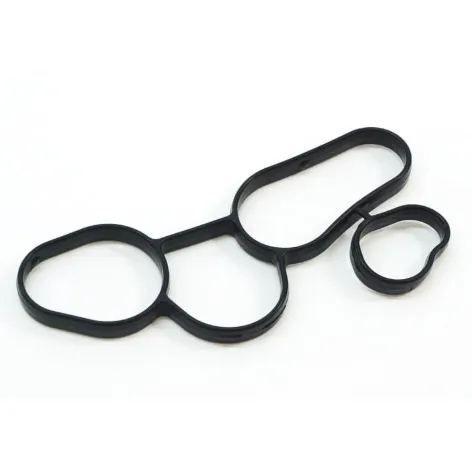Understanding Oil Drain Plugs: Types, Issues, and Replacements
When it comes to routine vehicle maintenance, few components are as overlooked yet as critical as the oil drain plug. This small but essential part allows used motor oil to drain from your engine during an oil change, and its condition can have significant implications for engine health. In this article, we'll explore common types of oil drain plugs, what to do when they get damaged or stripped, and how to choose the best oil plug replacement for your vehicle.

Types of Oil Drain Plugs: Universal, Self-Tapping, and Rubber
There are several different types of oil drain plugs available, each suited for specific needs and repair situations.
Universal Oil Drain Plug
A universal oil drain plug is designed to fit a wide range of vehicles. These plugs often have adjustable threads or oversized heads to accommodate various oil pan sizes. While convenient for general use or emergency repairs, it’s important to ensure that a universal plug forms a tight seal to prevent leaks.
Self-Tapping Oil Drain Plug
A self-tapping oil drain plug is particularly useful when the original oil pan threads have been damaged or stripped. These plugs have special threads designed to cut into the soft metal of the oil pan, creating new threads as they are installed. This makes them an effective solution for temporary or even semi-permanent repairs, especially when a full oil pan replacement isn’t immediately feasible.
Rubber Oil Drain Plug
The rubber oil drain plug is another quick fix, often used when traditional metal plugs fail or when a leak occurs. It typically works by inserting a rubber stopper into the drain hole and expanding it using a screw or twist mechanism to seal the opening. While not a long-term solution, it can be a lifesaver in roadside repair situations or while awaiting parts.
When Things Go Wrong: Stripped Oil Plug Issues
One of the most common problems vehicle owners face during oil changes is a stripped oil plug. This occurs when the plug is over-tightened or cross-threaded, causing damage to the threads on the plug or, worse, the oil pan itself.
Symptoms of a Stripped Oil Plug
Oil leaking from the drain plug area
Inability to tighten the plug securely
Visible metal shavings around the plug
The plug spins without catching when you try to remove it
In minor cases, simply replacing the plug with a self-tapping or slightly oversized version can fix the issue. However, if the oil pan threads are severely damaged, a thread repair kit or even a full oil pan replacement may be necessary.
Preventing Stripped Plugs
To avoid stripping your oil plug in the first place, always use a torque wrench to tighten it to the manufacturer’s recommended specification. Avoid using excessive force, and ensure the plug is threading correctly before tightening.
Choosing the Right Oil Plug Replacement
When it's time for an oil plug replacement, it's essential to choose the right type and size to ensure a leak-free seal and proper function.
OEM vs. Aftermarket Plugs
OEM (Original Equipment Manufacturer) plugs are designed specifically for your vehicle’s make and model. They tend to provide the most reliable fit and sealing. Aftermarket options, including universal and self-tapping plugs, can offer flexibility and cost savings, but it’s important to verify compatibility.
Material Considerations
Oil drain plugs come in materials such as steel, aluminum, and brass. Steel plugs are durable and commonly used, while brass offers excellent resistance to corrosion. Aluminum plugs are lightweight but more prone to damage if over-tightened.
Magnetic Oil Drain Plugs
Some replacement plugs feature magnetic tips designed to attract and hold metallic debris suspended in your engine oil. These can be a smart upgrade to help monitor engine wear.
When to Replace the Plug
During every third or fourth oil change
If the plug shows signs of wear or corrosion
When the washer or gasket is deformed or missing
After a stripped plug repair
It’s also a good idea to replace the washer or gasket every time you reinstall the oil drain plug to ensure a proper seal and prevent leaks.
Final Thoughts
Though small in size, the oil drain plug plays a vital role in your engine’s health. Whether you're dealing with a stripped oil plug, considering a rubber or self-tapping oil drain plug, or simply planning your next oil plug replacement, understanding your options can save you from costly repairs and keep your vehicle running smoothly. Regular inspections and proper torqueing techniques go a long way toward avoiding the headaches associated with oil drain plug issues.
-
Seal 12x20x5: Precision Radial Shaft Seals for Industrial Reliability
News Nov.24,2025
-
Seal 12x18x5: Essential Guide to Specifications, Applications & Vendors
News Nov.24,2025
-
Understanding Seal 12 20 5: Applications, Specifications & Industry Insights
News Nov.23,2025
-
Durable Oil Seal 85x110x12 – Reliable Sealing Solutions for Industry
News Nov.23,2025
-
Durable and Precise Oil Seal 75x95x10 for Efficient Machinery | YJM Seal
News Nov.22,2025
-
Durable Oil Seal 75x100x10 for Reliable Industrial Performance | YJM Seal
News Nov.22,2025
-
High-Quality Oil Seal 65x90x10 | Durable & Reliable Sealing Solutions
News Nov.22,2025
Products categories















